
How to Choose Curtains
How to choose curtains to provide luxury, convenience and style to suit every room in your home. Here is how to choose the perfect pair of made to measure curtains in a luxury fabric.
WOULD YOU LIKE NEW CURTAINS DELIVERED TO YOUR DOOR?
10 top reasons to buy Vanessa Arbuthnott Curtains
- Our expert team can help you choose the best made to measure curtains to suit windows in your home.
- watch our expert guide to measuring curtains to help you measure the curtains you need
- Phone us. My team picks up the phone straight away and can guide you through your choices and the measuring.
- Curtains are handmade by experts and are reasonably priced.
- You can choose from any of our favourite luxury designer fabrics.
- Option of 5 different headings. This includes 2 depth options for the Cottage Pleat: 5cm & 10cm.
- Standard lining and interlining like blackout curtain lining for undisturbed sleep.
- You can choose a contrasting fabric for the leading edge and reverse fabric.
- Beautifully packaged to minimize creasing.
- My lead time is reliable, you will receive your new curtains within 10 weeks from ordering, delivered to your door with hooks and care/hanging instructions enclosed.
See a selection of popular made to measure curtains, and if you need more ideas you can browse through the ‘Inspiration‘ section of my website.
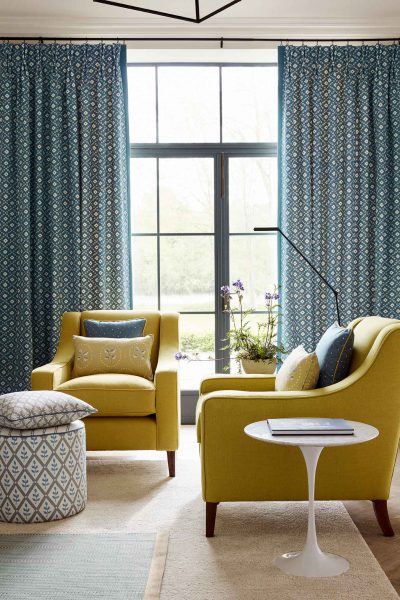
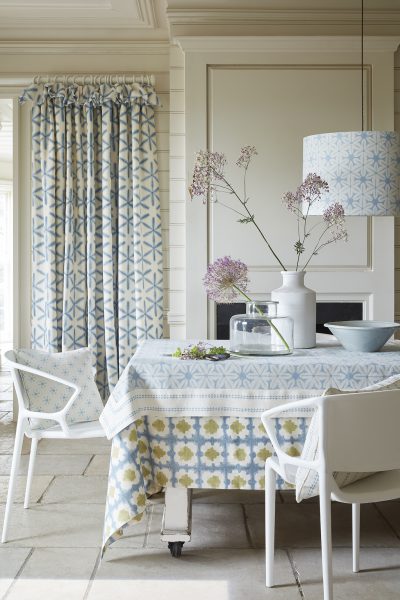
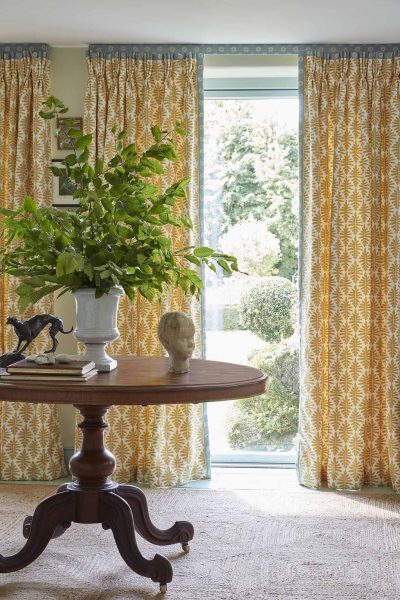
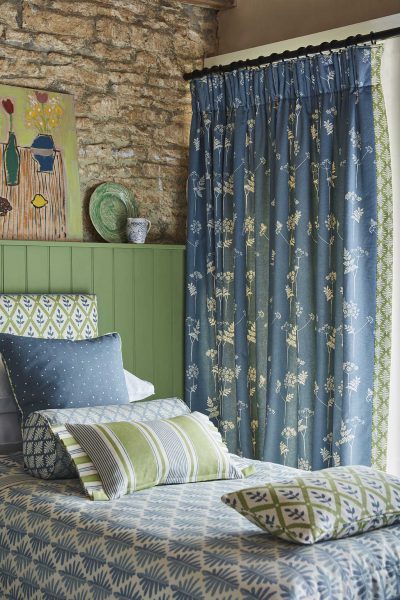
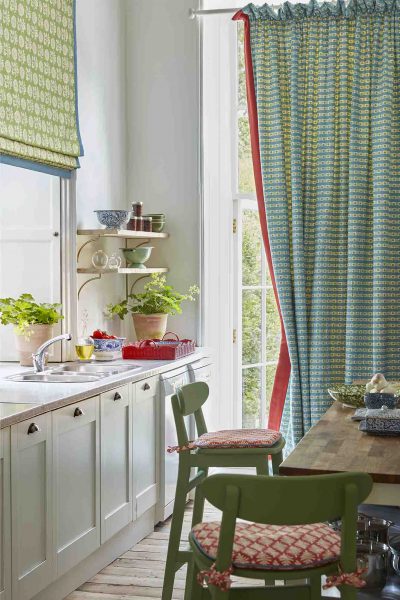
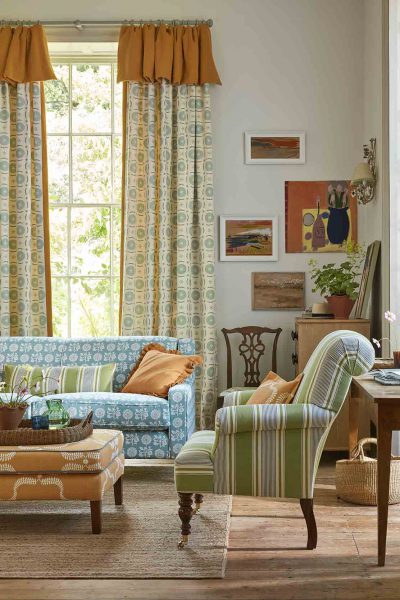
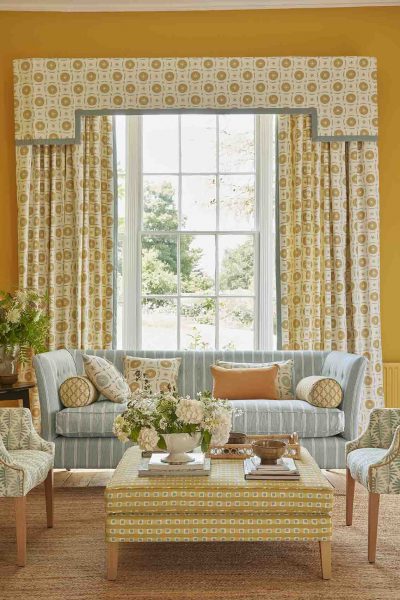
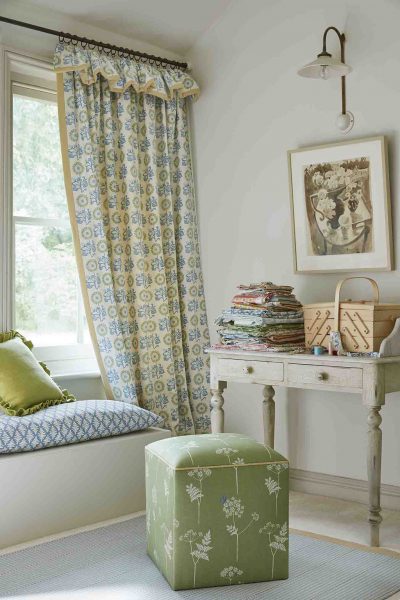
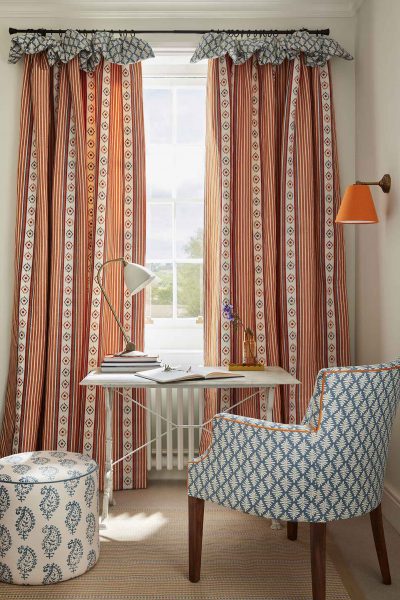
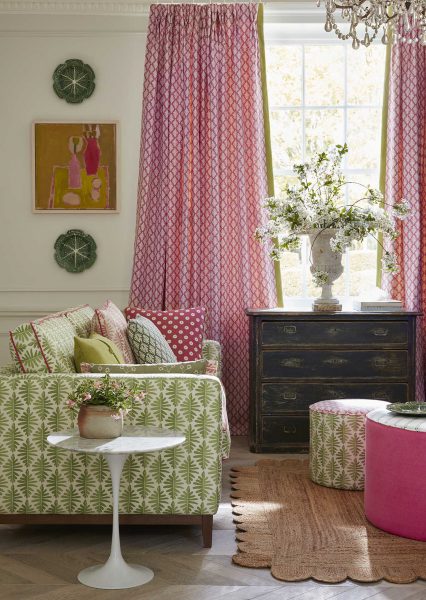
What style of curtain heading do you recommend when choosing curtains?
Here are some helpful tips on choosing the heading for your curtains
Double and Triple Pleats
These are decorative curtain headings fitted to each window with permanent sewn-in pleats, for a luxurious, tailored look. Recommended for more formal rooms, maybe a dining room or smart sitting room. Double pleats are a little more contemporary than triple pleats. Both have the benefit of several different hook positions, allowing you to alter the length of the curtains if necessary and can be used with poles and tracks. It is important to carefully measure your track or pole as the curtains are made to an exact fit. It is also easier to put up the pole or track before measuring if possible.
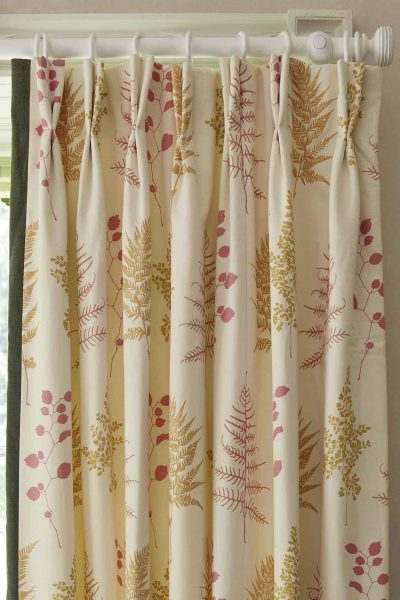
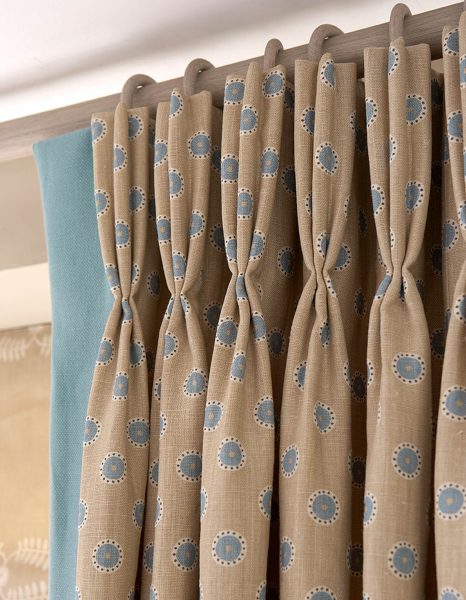
Pencil Pleat Curtains
This curtain heading is available with either a 3 or 6 inche heading tape, which has three rows of string threaded through it for three hook positions to suit all types of track and pole.
It is called ‘pencil pleat’ because the fabric folds are gathered closely together when the strings are pulled up, resembling a row of pencils laid side by side. This heading has the benefit of being adjustable in the width if you move house, or want to adapt them to suit a different window in your house.
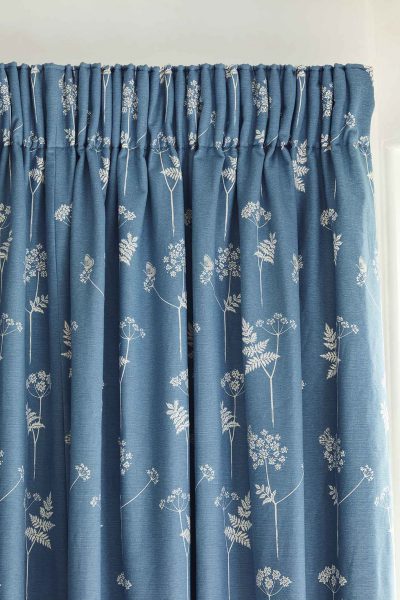
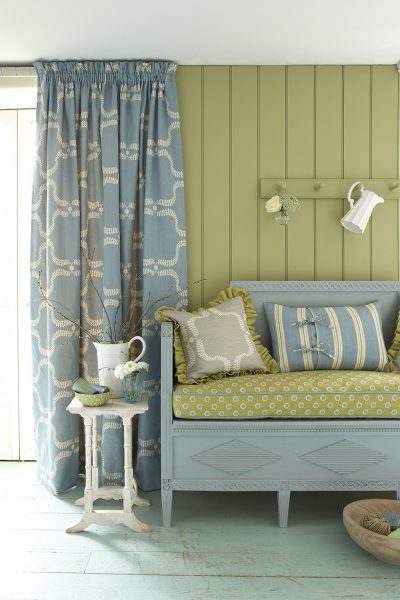
Cottage Pleat Curtains
This heading will give you an informal gathered look, ideal for use in a kitchen or bedroom. A cottage pleat heading can be used with tracks or poles and can be gathered to suit the required width of your window.
In these photos you will see the heading created with two of our depth options: 5cm or 10cm.
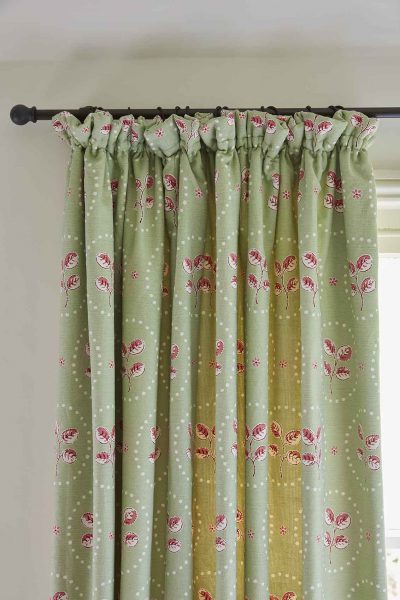
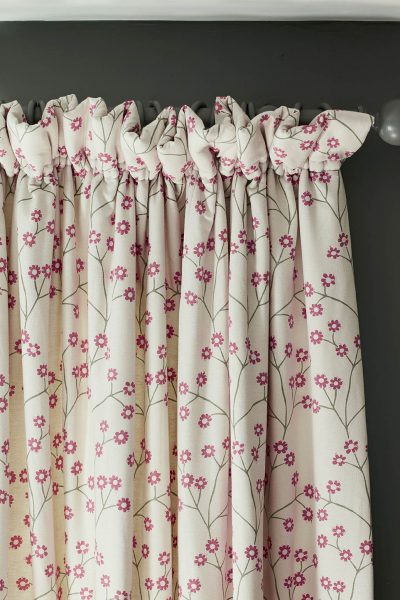
LHS is a 5cm Cottage Pleat header, with the RHS as 10cm.
Flop Over Frill Curtains
This heading will give you an informal gathered look, great for kitchens or bedrooms. A cottage pleat heading can be used with tracks or poles and gathered to suit the required width of your window. The below left photo shows the heading with a 1″ tape and a 2″ frill above the tape. The right has a leading edge on the curtain which then continues on the bottom edge of the flop over frill. This is my favourite heading being soft and romantic.
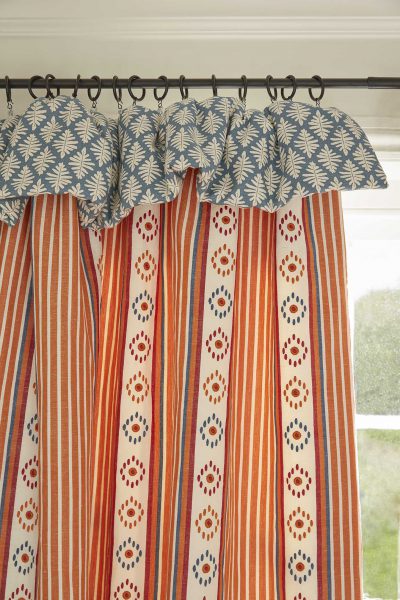
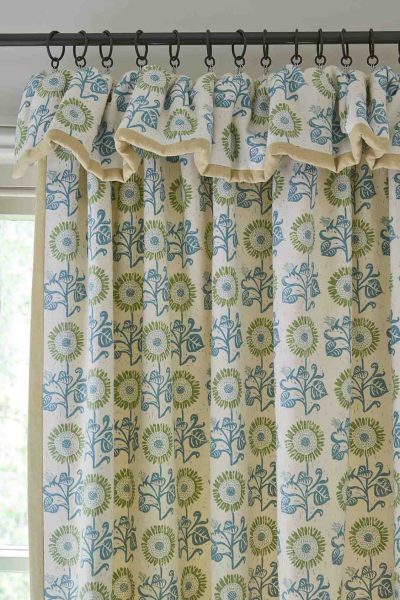
How do I decide how to line my curtains?
All of our bespoke, hand finished, Made to Measure curtains come with a high quality ivory lining. Additional options include a warm ‘bump’ interlining for insulation, and adding volume to your curtains for a more luxurious look. Alternatively you could opt for what we call a ‘dommette’ interlining, which isn’t as thick as our normal ‘bump’, but still offers aspects of the aforementioned. Should you wish to eliminate light, we also offer blackout lining. Lastly, and for our most impactful, luxury looking curtains, we offer a contrast lining where you can choose to have any fabric of your choice, applied to the reverse of your curtain.
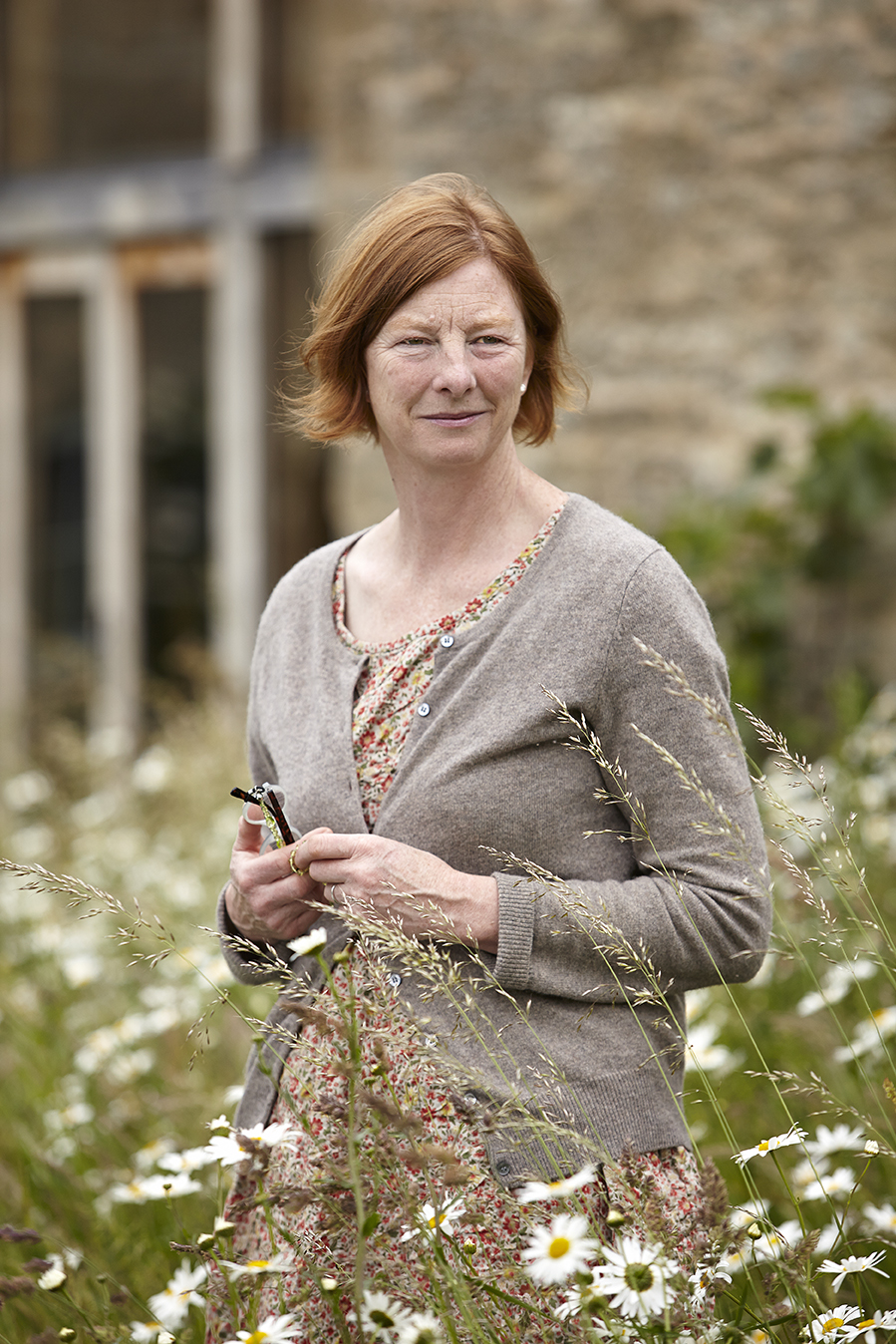
We sell fabrics exclusively designed by Vanessa Arbuthnott, along side small, bespoke collection of Made to Measure items which includes curtains, blinds, sofas, footstools, chairs, headboards, and quilts, all handmade specially for you by master crafts people.
